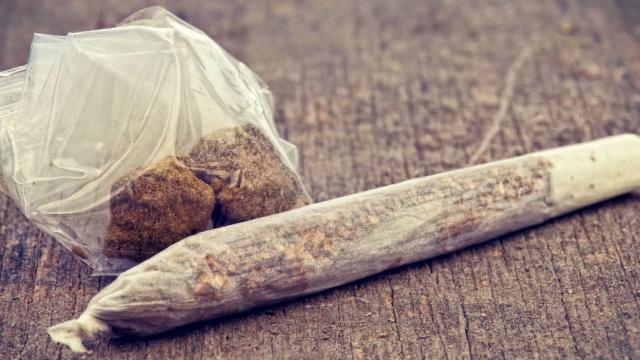The intoxicating effects of cannabis have skyrocketed in the last 50 years as the plant’s rapidly widening acceptance has spurred a race among growers to produce ever more potent strains. But even the stickiest of the ickiest buds top out at 25 per cent THC per unit weight and, for a new generation of connoisseurs, that isn’t good enough.
An ancient technique, revived in the 1970s and rapidly modernized since the days of disco, now promises to squeeze every last drop of THC from top-shelf strains, delivering near-narcotic highs that are orders of magnitudes cleaner than what even the most extravagant vaporizing percolator rig can produce. Welcome to wax.
Hash by Any Other Name Would Smell as Dank
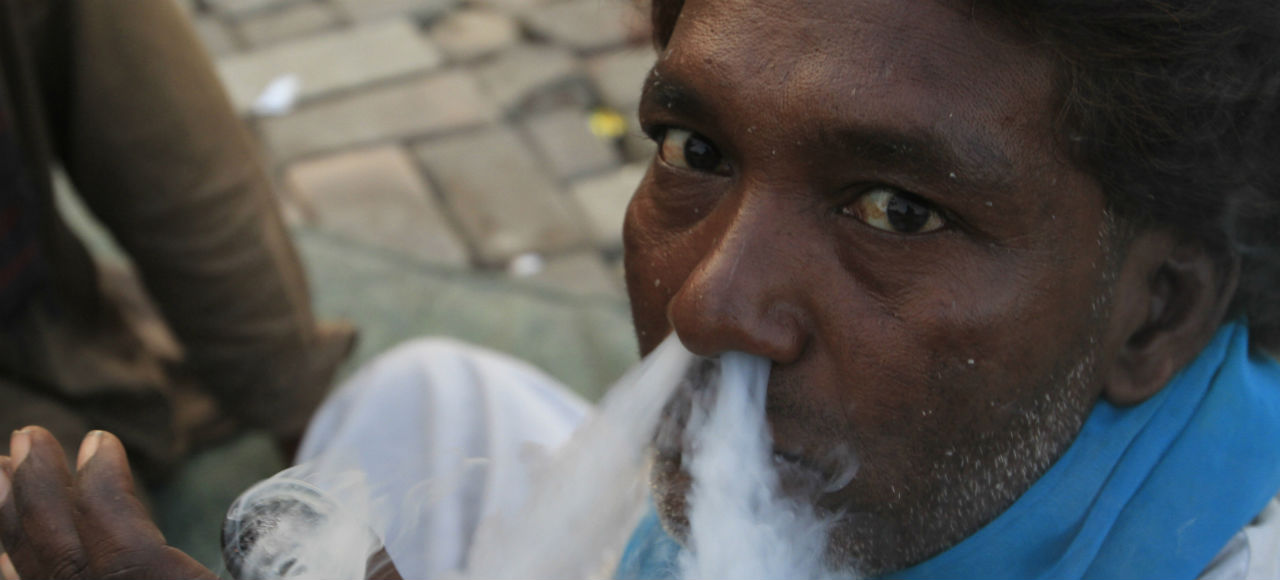
image: AP Images
Hashish — arabic for “grass” — has been around nearly as long as we’ve known of the psychedelic effects of cannabis. First collected in Morocco from the crystalline-stalked resin glands called trichomes, hashish has been used in ceremonies throughout the middle and far east for hundreds of years, not to mention your weekend ritual from college.
Even as far back as 1596, famed Dutchman traveller and writer Jan Huyghen van Linschoten described the Egyptian’s use of hash (or “Bangue”) in edibles,
Bangue is likewise much used in Turkie and Egypt, and is made in three sorts, having also three severall names. The first by the Egyptians is called Assis (Hashish (Arab.)), which is the poulder of Hemp, or of Hemp leaves, which water made in paste or dough, wherof they eate five peeces, (each) as bigge as a Chesnut (and some more); such as eate it, for an hower after, are as if they were drunk, without sence, and as it were besides themselves, thinking they see many strange sights, wherein they are much pleased. This is used by the common people, because it is of a small price, and it is no wonder, that such vertue proceedeth from the Hempe, for that according to Galens opinion, Hempe execssively filleth the head.
These early presses of hash were largely either collected directly from the plants or extracted from the plant material, as van Linschoten describes, by making a dough from the trichome-rich water in which hemp stalks have been mashed.
Today, things are a bit different and the methods of extraction come in two primary classes: whether or not they utilise solvents.
The Types of Hash and How They’re Made
Cannabis originally developed cannabinoids as a means of self-defence against insects that would feed upon it. That’s why it developed cannabinoid-rich glandular hairs known as trichomes across its stalks and leaves. Through a variety of mechanical means humans have devised means of separating the trichomes from the plant matter and concentrating it into hash.
The simplest method is to physically remove the trichomes using a sieve. The resulting kief, sometimes erroneously referred to as “pollen”, ranges in colour from crystalline white to yellow to light brown and has the properties of fine dust. Often pressed into cakes of hashish, kief can be smoked atop bowls or straight up, vaporized or incorporated into edibles. Containing anywhere from 15 to 50 per cent THC by weight, kief is an easily produced concentrate.
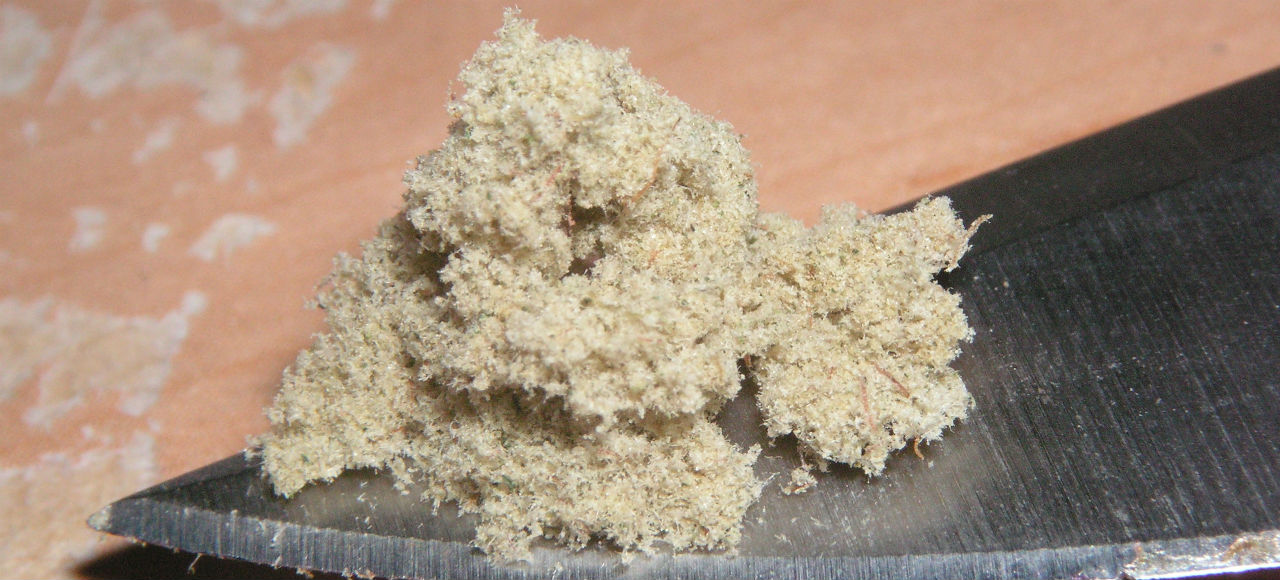
Kief
A second method of mechanical separation utilizes ice-water. This method relies on the principle that the resin glands of the cannabis plant are more dense than water, and results in a product known as Cold Water hash or Bubble hash. The plant materials are first secured within specially-designed filtration bags, then submerged in an ice bath to lower their temperature and make the trichomes more brittle. With a bit of agitation the trichomes will break off of the plant matter and fall through the filter bag’s pores and sink to the bottom of the bath where they can easily be collected.
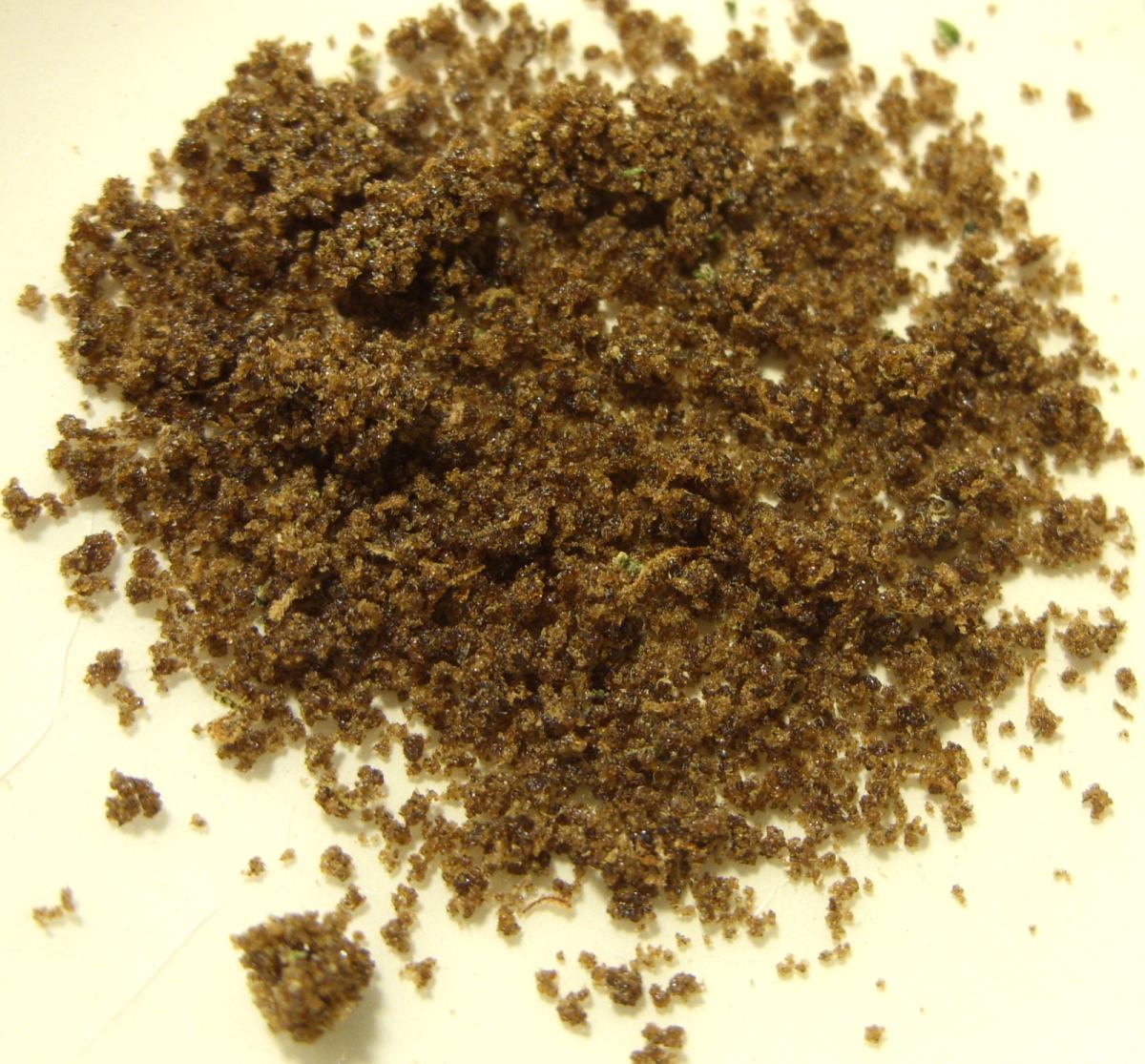
Cold Water Hash image: Mjpresson
This results in a highly concentrated resin (running between 30 and 60 per cent purity) produced through an exceptionally clean method that does not rely on chemical solvents, but rather simple physics. In fact, its nickname of bubble hash comes from a means of testing the product’s purity — only high grade resin with minimal impurities will bubble when heated, if it simply melts or vaporizes, you know the hash has been cut with something. Often plant matter will be added back in to give the product a green tint but quality hash can range in colour from yellow to chocolate brown to ruddy orange, depending on how it was manufactured.
Getting Solvent
Solvents are a fairly recent development in hash manufacturing but are quickly becoming the preferred method to produce product with extremely high-purities. Rather than mechanically separate the resin from the plant matter, these methods employ something like ethanol, butane, or hexane to dissolve it instead. The solvent is then evaporated, boiled, or otherwise siphoned off, leaving behind just hash oil, which can then either be consumed directly or processed further into harder resins and waxes.
Purity can range from 70 to 90 per cent with these products — the equivalent high of smoking as many as two joints condensed down into a single dab of hash — plus the product itself does not emit a scent when stored or smoked.
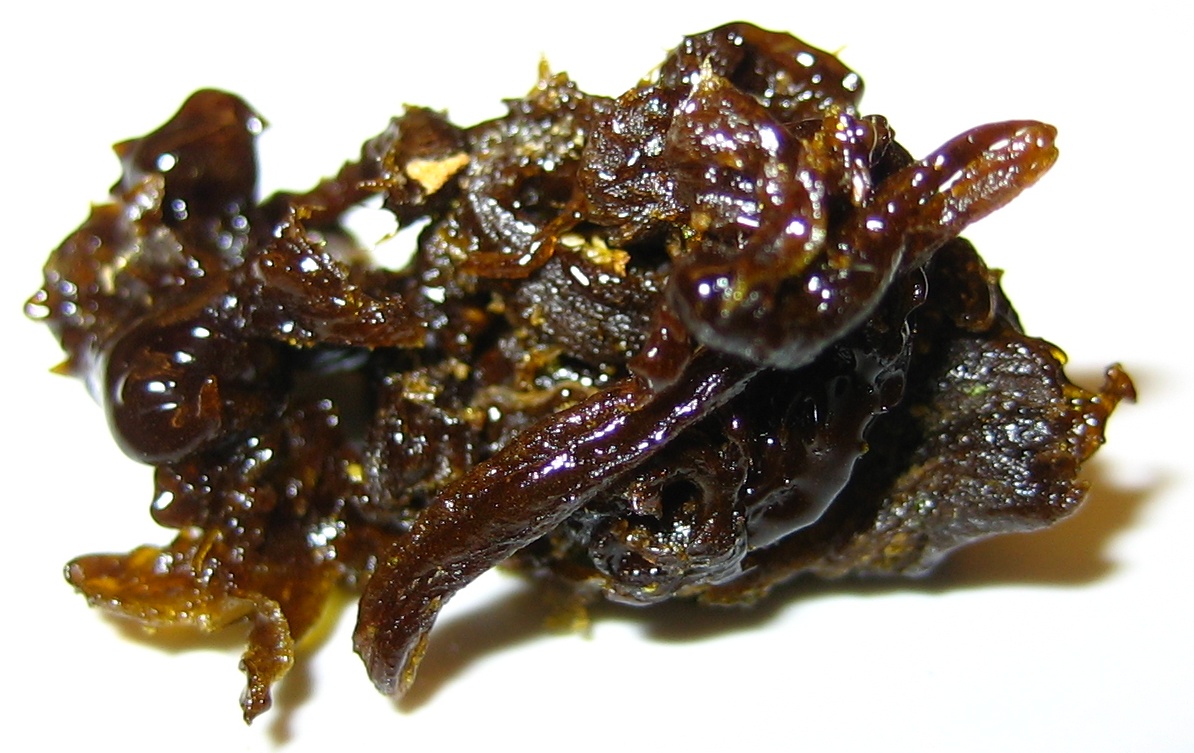
Hash oil
However, blasting a solvent through plant matter doesn’t leave you with nothing but trichomes. “You’re getting a lot of extra goodies that come out in those solvent extracts,” Bob Melamede, Ph.D., associate professor of biology at the University of Colorado, and the president/CEO of Cannabis Science Inc., told High Times.
“Aside from the oils, there are all sorts of compounds that come out that probably have beneficial value,” he continued. “We’ve got indications that there are differences in the effects, pain relief properties and potentially other important phenomena. We don’t really know at this point … all we know is that this plant is quite the magical chemistry set.”
But making hash ain’t easy, and it requires a lot of resources. A pound of marijuana typically produces just a tenth to a fifth of a pound of hash oil, according to Oregon-based grower, Cannabis Cup winner “Ganja John” via Wired. The use of chemical solvents, often explosive mixtures of flammable gases that routinely ruin the weeks of many a wannabe grower, must be fully exorcised from the product before it can be used.
But the dangers inherent in making this next-gen hash oil have done nothing to inhibit its explosive rise in popularity over the past few years. “BHO [Butane Hash Oil] has been gaining in popularity in the past three years,” High Times senior editor Bobby Black told Wired. “It’s been done for decades, but it was only done by a few people and it was very underground. Even at High Times we didn’t really talk about it or cover it because it was so rare.”
Brad Gibbs, of Greenest Green, a state-of-the art BHO lab in Denver, Co echos those sentiments, betting that hash oil dabs will all but eliminate demand for traditional cannabis products. “Dabs are the future of cannabis,” he told High Times. “Both recreational and medicinal.”
Budder and Beyond
Leading the concentrate charge is a Canadian grower and BHO producer going by the name of BudderKing. He’s reportedly produced the cannabis equivalent of Heisenberg’s crystal blue.
“I make something called ‘Budder,’ and it’s the strongest, cleanest, stoniest stuff in the world,” He declared to Cannabis Culture‘s Pete Brady. “It’s virtually all THC. There’s nothing better than Budder.”
Indeed, Cannabis Culture submitted to Dr Paul Hornby, a chemist and plant analyst who runs Hedron Analytic Inc, a cannabis potency testing facility in Canada who declared, “Budder is the cleanest, most potent cannabis product I’ve ever tested.”
“The top Budder sample was 99.6% pure,” Hornby explained to CC, “which means if you had an ounce of it, only a tiny fraction of a gram would be anything other than cannabinoids. We also tested Budder for toxins, solvents, molds, diseases, heavy metals and other contaminants. There were none. It’s essentially just pure cannabinoids. I’ve tested a lot of cannabis materials, but this is the most impressive.”
The product reportedly comes as a light, golden-brown paste and is easily identifiable by its high price (often more than $US40 a gram) but also its overwhelming potency. Of course, you can be sure that there are thousands of enterprising BHO cooks around the world already working to purify that last little bit. But once you’ve already got to 99.6 per cent, the last 0.4 is just for bragging rights. [Cannabis Culture – Wikipedia – Animal New York – Wired – High Times ]
Top Image: diplomedia – Shutterstock
